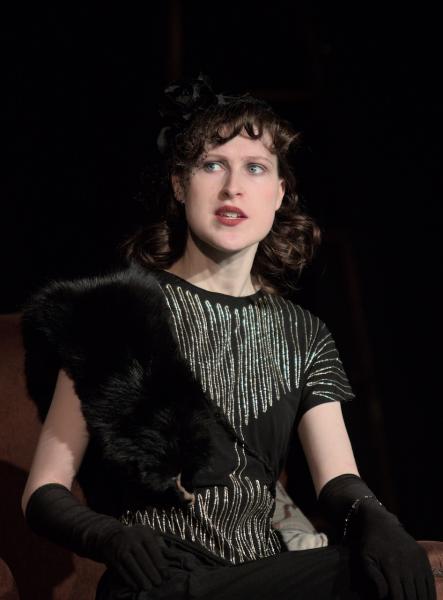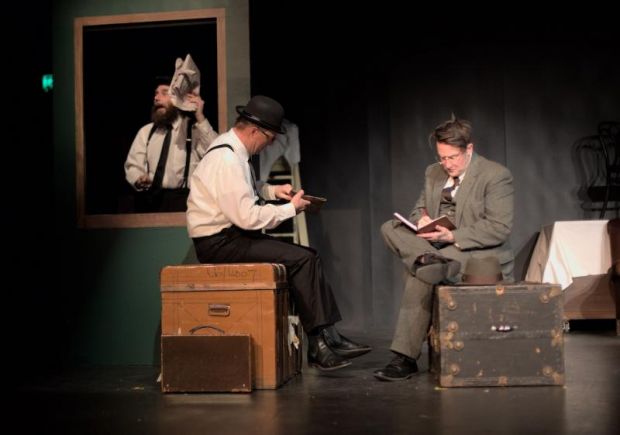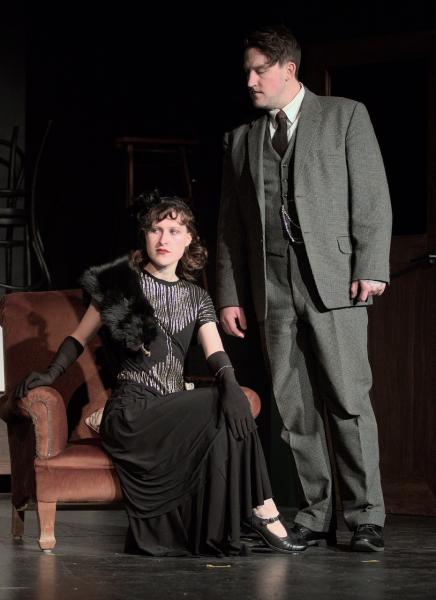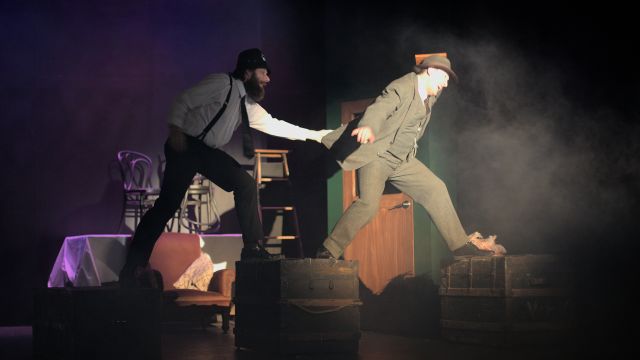The 39 Steps
Those of a certain age might remember the classic Hitchcock film of the same name which consolidated the spy genre of the innocent man on the run. This stage version of The 39 Steps uses most of the original dialogue, delivered by only four actors, to create a rollicking parody.
Jarod Goldsmith (6’ 1” with a stylish pencil thin moustache) immediately establishes the tone of the work with one expertly raised eyebrow. Goldsmith, as John Hannay, is the only actor not undertaking another role. His is a pivotal and assured presence.

Jean Ivey, another accomplished performer (a NIDA graduate who recently made a stunning directorial debut at OneFest), displays versatility as three characters: the femme fatale, the ingenue, and the crofter’s wife. Ivey wore Fahey’s costumes with style.
Andrew Gregson and Jeff Keogh covered the other 28 named roles, facilitating compression of several days of action into two hours heavy traffic of mentally and physically demanding performance. Keogh and Gregson enjoy themselves hugely in their various roles, all of which are distinguished by numerous accents, costumes and visually diverse representations. It is difficult to imagine better casting choices.

The logistics of props and costumes is compounded by the actors having to create the set from various movable components. Traditionally, this show is performed on a bare stage, but a permanent door and window prove extremely versatile. The rest of the setting is achieved largely with trunks, suitcases, bentwood chairs and a drinks trolley with every member of the cast contributing to the heavy lifting. On opening night, this sometimes slowed the pace of what is otherwise a tight rollercoaster of comedy. A false rear wall, beautifully decorated to mimic the reality of the stage interior, brought the action forward.
The scene on the train is worth a mention. The sound and lighting design (Lark and Carter) is exceptional. Utilising suitcases and window frames to simulate the carriage interior, the actors transition from salesmen and passengers, to a paper vendor and policeman with dizzying rapidity. The gags come thick and fast as the action morphs from inside the train to the roof of the carriage. A double level of audience enjoyment is extracted by the tongue in cheek self-awareness of the humour.

As the action progresses the fourth wall is broken more frequently. Actors appear to take delight in frustrating the technical crew. Some effects (for example, the doorbell and the off-stage party) were designed to operate on cue, but other effects implied feigned technical error (viz, the lamppost). The actors’ self-awareness of the farce was made more absurd on opening night when the bedroom fire genuinely failed to materialise.
The 39 Steps is an acting and technical tour de force. It is worth looking out for the pilots, the car ride, the bedroom scene, and the distant disco. Whilst these are fun, they are merely notable moments in a truly hilarious whole.
Anne Blythe-Cooper
Subscribe to our E-Newsletter, buy our latest print edition or find a Performing Arts book at Book Nook.

